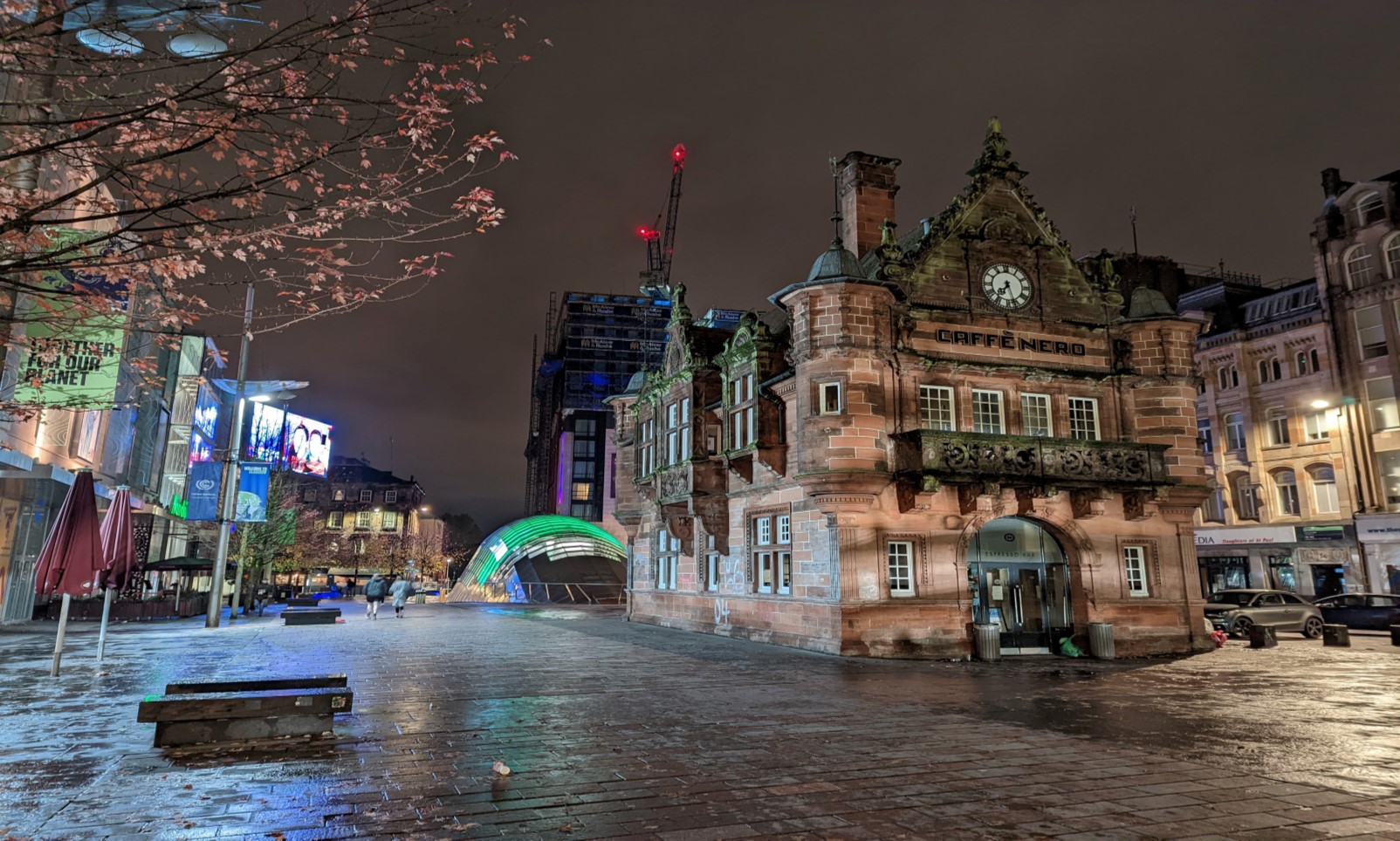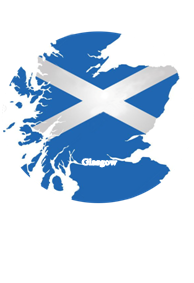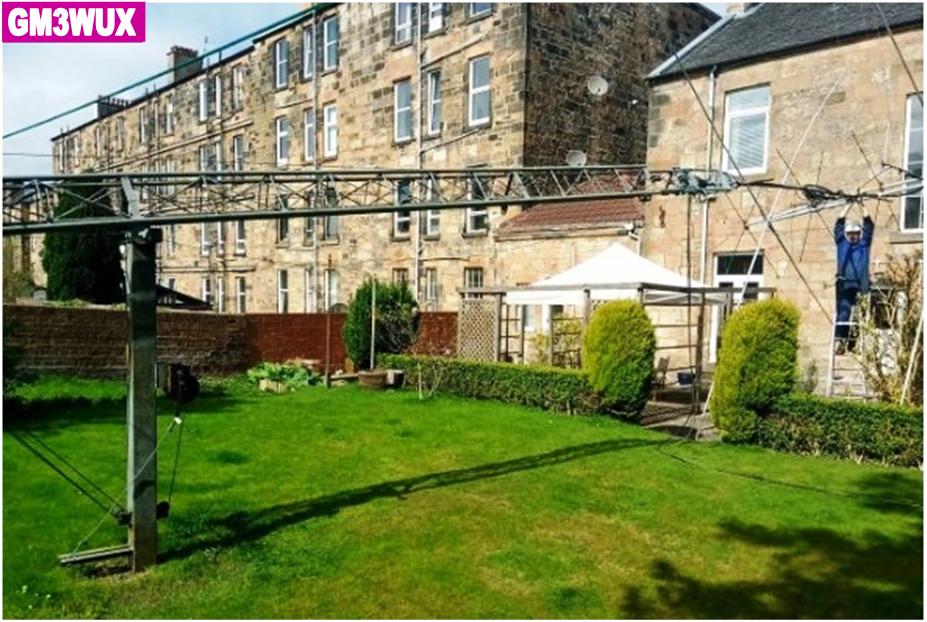
Snips – News For Scotland – 10th May
The news headlines:
- BBC features RSGB Get on the air to care campaign
- VDSL call to action in new online RadCom
- RCF Arkwright Scholar 3D prints PPE
GB2RS Script – HERE .
NEWS
Some sad news that Maurice Boyce GM0RRK passed away with Covid-19 and his wife Rose is also ill. No funeral will be taking place but the hearse will stop by his house on Ledi Drive at 11.30am on May 22nd. I’m sure that we all wish his wife a full recovery and send our condolences to the family.
Please note that the RSGB has temporarily relaxed the rules for practical assessments as a prerequisite for amateur radio licence examinations. These assessments have been suspended for the foreseeable future during the COVID-19 crisis. Foundation candidates can now sit their exam entirely on line. At present arrangements for Intermediate and Full examinations are currently under review. For further information go to www.rsgb.org/exam-faq. Latest news on this is that there are over 600 candidates now waiting to sit their exam, so get your entry in now.
For those of our listeners who want to buff up before taking the foundation exam then Billy MacFarlane of the Stirling Club has produced an on-line training programme with 43 lessons and this is available to use free of charge at https://gm6dx.thinkific.com/
CLUB NEWS
Ayr Amateur Radio Group has daily nets on 7.035MHz ± QRM at 10.15am, QSY to 7.065MHz for SSB; 145.450MHz at 10.30am; CW on 144.295MHz at 7.30pm, QSY to FM or SSB later. Sundays also see a CW net on 144.295MHz from 7pm and 145.450MHz FM at 7.30pm. Contact Derek, MM0OVD, on 0744 793 1941.
Dundee ARC has a net on Sundays via GB3AG from 7pm. Contact Martin, 2M0KAU, on 0776 370 8933.
Glenrothes and District Radio Club has open nets on Monday to Saturday at 10am on 3.790MHz. Tuesday and Thursday see Morse classes from 7.20pm on 145.425MHz. Contact Tam on 0775 352 6498.
Kilmarnock and Loudoun Amateur Radio Club has a net on Sundays from 2pm around 3.720MHz SSB, moving to around 3.540MHz for a CW net after the SSB net ends. Tuesday sees a net on 145.475MHz FM from 7.30pm and on Saturday there’s an online meeting. Contact Len Paget, GM0ONX, via email to klarcinfo@gmail.com.
Mid-Lanarkshire Amateur Radio Society has a net on Sundays from 10pm on 28.475MHz. On Wednesday it’s the DMR Scotland chat on TG23550 from 8pm and Friday sees a Zello net on the club channel, moving later to 2m FM. Details at mlars.co.uk.
West of Scotland Amateur Radio Society has a net on Wednesday from 8pm on 433.425MHz from 8pm. On Friday there’s a net on 145.375MHz from 8pm. Details at wosars.club.
On Monday Edinburgh and District Amateur Radio Club has a net starting on 433.525MHz FM at 8pm. Contact Norman, GM1CNH, on 0774 094 6192.
On Wednesday Inverness and District Amateur Radio Society has it net from 8pm on 145.575MHz and GB7BI, or GB7II slot 1 475, For details, email InvernessRadioSociety@gmail.com.
On Wednesday Lothians Radio Society will be holding a net on 144.350MHz SSB at 8pm. All are welcome to join in. For further information please contact Andy by email to secretary@lothiansradiosociety.com.
On Thursday Wigtownshire Amateur Radio Club has a net from 7pm on GB3DG. See gm4riv.org for other details.
NOTE: A comprehensive List of Club Nets can be found on the WoSARS Website wosars.club/radio-nets .
Snips – News For Scotland – 26th April
The news headlines:
- First remotely-invigilated exam callsigns issued
- Download latest 5MHz Newsletter
- Japanese amateurs get new privileges
GB2RS News Script – HERE .
NEWS
We start with news of an unusual on-the-air tribute. Dave Cossar, GM3WIL became a Silent Key on 4 April following an unexpected heart attack. The present lockdown rules prevent most people from attending memorial gatherings so, to coincide with Dave’s cremation, 30 local amateurs went on the air to pay their last respects and say a few personal words. Dave was a DXCC Honor Roll member, had held a number of distance records for microwave transmissions, was active in ARDF and, along with Roy, GM4VKI, was the face of the G-QRP club at rallies in Scotland and northern England.
CLUB NEWS
Glenrothes and District Radio Club has open nets on Monday to Saturday at 10am on 3.790MHz. Tuesday and Thursday see Morse classes from 7.20pm on 145.425MHz. Contact Tam on 0775 352 6498.
On Monday Edinburgh and District Amateur Radio club has its net. Contact Norman, GM1CNH, on 0774 094 6192.
Lothians Radio Society will be holding a net on 144.350MHz SSB at 8pm on Wednesday. All are welcome to join in. For further information please contact Andy by email to secretary@lothiansradiosociety.com.
West of Scotland Amateur Radio Society has a net on Wednesday from 8pm on 433.425MHz from 8pm. On Friday there’s a net on 145.425MHz from 8pm—details at wosars.club.
On Thursday Wigtownshire Amateur Radio Club meet on GB3DG at 7.30pm—see gm4riv.org for other details—Clive, GM4FZH, info@GM4RIV.org.
Dundee Amateur Radio Club commences SOS Radio Week operations on Friday. Next Sunday there’s a net on GB3AG from 7pm. Contact Martin, 2M0KAU, on 0776 370 8933.
EDIT 25/04/20 – A full table of Club Nets can be found – HERE .
An Original MW Pirate Fades Into The Aether
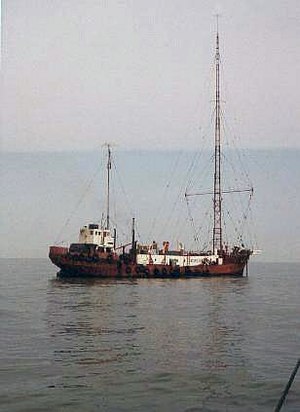
Ronan O’Rahilly, Radio Caroline founder who inspired UK pop and pirate radio, dies aged 79
Ronan O’Rahilly, the Irish founder of the notorious Radio Caroline that popularised pop music on British radio, has died aged 79.
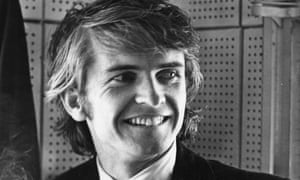
His death was announced by the radio station that is still broadcasting, who said: “In a pastime populated by unusual people, Ronan was more unusual than all of them combined.” He had been diagnosed with vascular dementia in 2013.
O’Rahilly first became known as a player in the burgeoning “swinging London” scene of the 1960s, managing Alexis Korner (the blues-rocker who nurtured the career of the Rolling Stones) and Georgie Fame. Fame eventually had three UK No 1 singles, but O’Rahilly initially struggled to get his musicians noticed by BBC stations and the then-popular Radio Luxembourg, and so founded his own station, Radio Caroline, in 1964.
He circumvented licensing laws by acquiring a former Danish passenger ferry, anchoring it in the North Sea off Felixstowe, and broadcasting from there. With a much less diverse radio industry than today and the BBC only playing two hours of pop music a week, Radio Caroline quickly amassed a listenership of millions for its daytime pop-focused output.
Many DJs would become household names and enjoy successful post-Caroline careers, including Tony Blackburn, Johnnie Walker, Dave Lee Travis and Simon Dee. Walker paid tribute, calling him an “amazing man … who made the impossible possible and changed radio for ever”.
In 1967, an act of parliament outlawed offshore radio stations on the grounds that they were not paying royalties to artists, and that their broadcasts could interfere with emergency channels. A number of Radio Caroline’s DJs moved to the newly created Radio 1, which had been influenced by the success of the former and another offshore station, Radio London. Radio Caroline then moved to Dutch waters, and continued broadcasting at sea until 1991.
O’Rahilly used Radio Caroline to promote his own philosophy of “loving awareness”, which espoused peace and love over hate, and even set up a band, Loving Awareness, to further the cause.
He also continued his management career, including representing James Bond actor George Lazenby. Lazenby paid tribute to O’Rahilly on Instagram, saying “rest well, Ronan”.
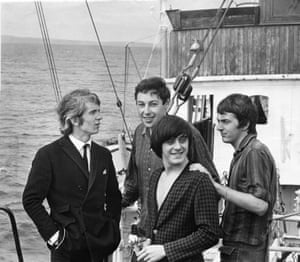
Lazenby shared “bittersweet” reminiscences about how O’Rahilly convinced him not to take a contract for multiple Bond movies, with the franchise passing to Roger Moore. “He was very influential on me giving up the role of James Bond back in 1969,” Lazenby wrote. “Ronan convinced me Bond was all over … I’d be in danger of becoming part of the Establishment. Something he rebelled against. Easy Rider was supposed to be the way forward and I could do three or four of those type of movies for every Bond. I wanted to be a free spirit, make love, not war. Ronan wouldn’t let me sign the Bond contract – kept sending it back … Who knows what would have happened had Ronan not got a hold of my brain? But I don’t regret a day of my life.”
O’Rahilly also produced Lazenby’s film Universal Soldier, as well as the Alain Delon and Marianne Faithfull film The Girl on a Motorcycle. The Radio Caroline story became the basis for the 2009 Richard Curtis film The Boat That Rocked, starring Philip Seymour Hoffman.
Original Article – THE GUARDIAN 21st April 2020
GM3HBT – SK! Funeral To Be Streamed On-Line (Link Now Added)

EDIT: 28/04/20 – Funeral Streamed Video Link Details – HERE .
Jack
Tom died peacefully last week in Clinton House care home. He was 90. Please pass on to WoSARS folk that knew him.
I have the date and time for the funeral… Thursday 30th April at 12 noon in Daldowie crematorium.
Final arrangements yet to be made but it will be live streamed so that that those who would like to be there “”virtually” can be given details once I have them. The funeral is limited to 10 people. Mostly family.
73
Scott – GM4CLQ
REPLY
Sad news indeed. In discussion with Tom – MXN a couple of weeks ago he mentioned that Tom was looking to be on his last ‘tether’. And heard Bill – UBJ mention it to Vic – VTB after yesterday’s News.
Of course I knew Tom through our mutual employer Motorola and usually when I was up at EK I would always try and have a chat with him or Norrie – GM4BVU if they weren’t too busy. Always discussing the latest amateur issues – specifically the repeaters as in those early days they were both avid users of FM (although Tom was mainly a CW man on HF – hi!)
73
Jack – GM4COX
Dave GM3WIL – SK
Copied off GM13 Forum. Also checkout QRZ.com.
|
11:43 #1838
It is with tears in my eys to report the my best mate Dave GM3WIL passed away last night due to a massive heart attack. RIP Pal.
Roy GM4VKI |
|
|
|
12:44 #1839
Sad to hear that Roy. I didn’t know Dave very well but my thoughts go
out to his friends and family especially as a funeral will be so different and difficult at these times.Andy MM0FMF |
|
|
|
Oh no – this is tragic. I’ve known Dave from away back in the 70’s when we were both experimenting on 2M – specifically Auroral contacts. My last chats with him seem to reassure me that he had made a good recovery for the previous underlying heart problems. It appears not to have been the case? As I’ve said – tragic and sad, and we’ll miss his ‘quirky’ experimentation. A true amateur (:>( 14:37 #1841
In message <0a5w.1585997020047929611.qLF7@groups.io>, Roy – GM4VKI via
groups.io <rkavampsev=aol.com@groups.io> writes
I’m sorry to hear that; I knew he had health problems. I’ve known him Brian GM4DIJ |
Frontier-Women Conquers Summits
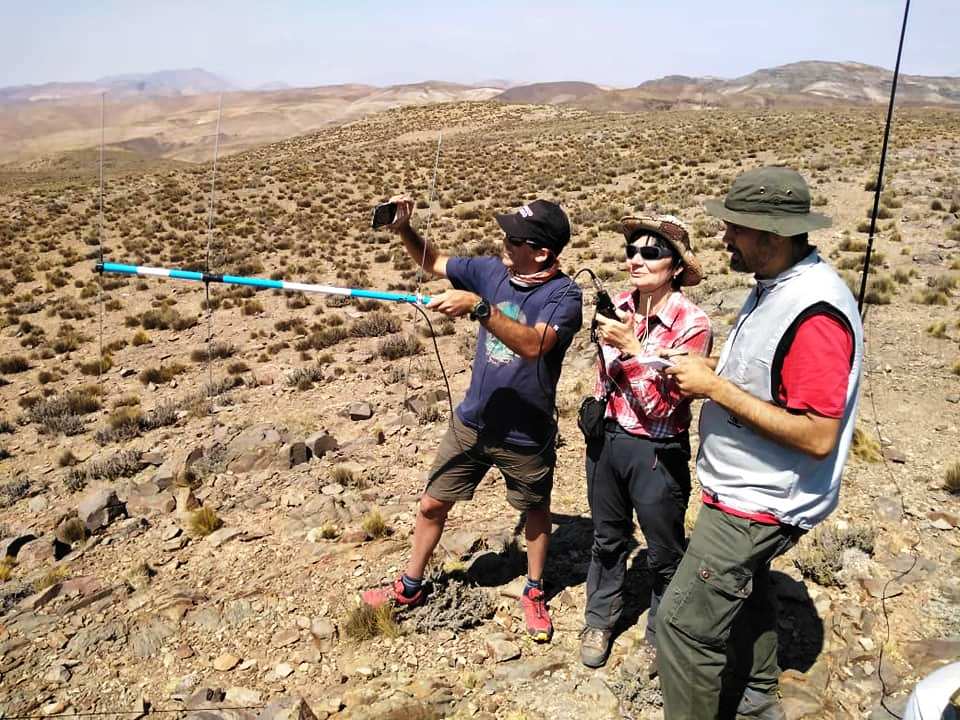
Frontier-women conquers Summits – By Péter Váry O.
Women usually go to the hairdresser, go shopping, and usually do “feminine” things when they have time off. Éva Gajdó, a teacher of computer science at Tivadar Puskás Vocational High School, who teaches programming on CNC (computer-controlled) machines, does not like this. She climbs mountains. And up there on the summit, she transmits radio signals. It may seem a strange combination at first, but it is recognised as a sport. Established for less than a decade and a half, it is already gaining in popularity and Éva Gajdó has accomplished something very big in this sport in a short time. Her success is the envy of her fellow men, which as she is a Szekler, does not often happen. (The Székelys derive their name from a Hungarian expression meaning “frontier guards”.)
Éva Gajdó has been roaming the mountains since she was a child. She became a true lover of climbing when one of her teachers took her on an expedition. Then life sank into the ordinary course of events: she got married, the children came and there was little opportunity to conquer the peaks.
Several years ago however, talking about childhood dreams with a group of friends, Eve recalled that when she was sixteen, she was determined to climb Mont Blanc. But it seemed it would remain just a dream. Then, a few days later, a friend told her that the Szeklers were hiring amateur climbers and heading to Mont Blanc.”I didn’t think, I called Tulit Sombor, and applied,” says Eve.
Two months of tough training was unsurpringingly not enough to qualify for the team. She also found her gear was unsuitable. She hiked in velvet pants and her ancient boots caused problems; the two months were agonizing. But Sombor reassured her that she had all the skills and with a little training, could climb Mont Blanc. It became a passion and she has not missed a weekend in five years and even celebrated New Year’s Eve on top of a mountain.
She applied for another expedition, but unfortunately before her departure she sprained an ankle. She was able to climb this year, but couldn’t use the radio.
In order to understand why Eve should have been broadcasting radio signals from the highest peak in the Alps and what activation means we need to introduce the sport called SOTA. The acronym comes from ‘Summits on the Air’, this radio competition was launched in 2002 by radio amateurs who combined there passion with mountaineering.
The competition (Edit: SOTA is not a contest it is based on your own self fulfilment) consists of climbing the designated peaks – at least 150 meters above its surroundings – by hiking, and from the ‘summit’ the hiker must establish at least four radio links with other radio amateurs around the world (meaning activation).
The peaks score between 1 and 10 according to their height and can be activated once per year.
The map provided by NASA to radio-operators in Romania has about two hundred SOTA peaks, of which 250-300 can be climbed under normal conditions, ie on a more or less well-marked path.
A walkie-talkie can achieve the necessary score if it is successfully activated, that is, it has been climbed and a minimum of four mandatory contacts made. After earning a thousand points, the title ‘Mountain Goat’ and trophy will be awarded to the competitor. Achieving a thousand points usually takes several years to complete. Eva did a special job here too.
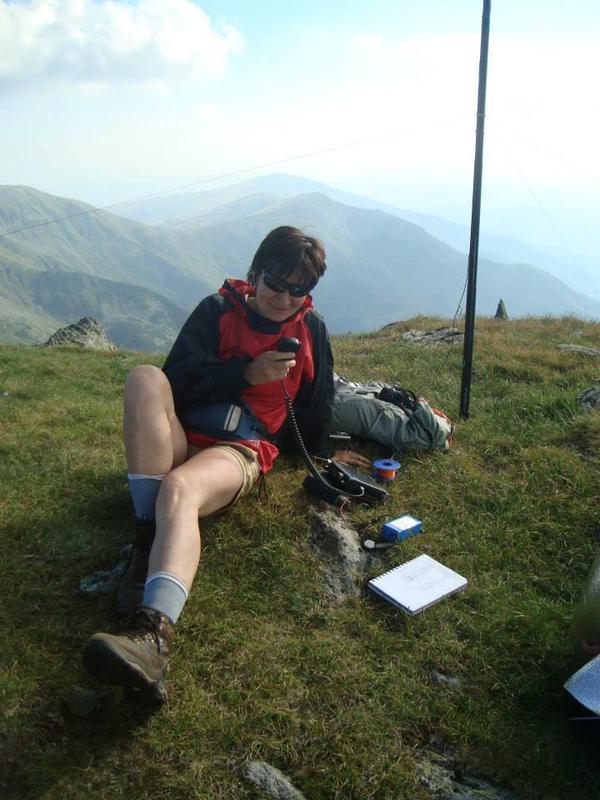
Eve met a man in Jezer (Bosnia and Herzegovina) on a hike, while trying to establish a radio connection at the summit. He was interested in the subject, because there is a radio club at Puskás Tivadar Vocational School, Budapest, and he was wondering how to create something new and interesting for the students. At that time, he had no plans to start radioing himself, or that hiking would become a competitive climb. He asked a teacher at Transilvania University in Brasov, Csaba-Zoltán Kertész, if he would come and introduce SOTA to the children.
Since January last year, Csaba has gone to St. George every Tuesday, trying to infect students with the radio virus. Because amateur-radio amateur is well-suited to the younger generation, SOTA is becoming more and more popular, including foxhunting, but knowing the basics of radio is essential.
Eve had no childhood dream of becoming a radio amateur but her dedication to teaching led her there. Csaba Kertész enthusiastic for the Tuesday afternoon classes included taking the students on several trips, where they could experience “live” what walking radio was about.
Eva thought that if Csaba couldn’t come for some reason, it would be a good idea if someone could take care of the children. But to do that she needed a radio license.
– You have to take a very tough exam: electronics, knowledge of frequencies, first aid. You have to learn the phonetic alphabet that is used in radio, to know what phrases can be heard and what are not, so there are ethical rules as well.
She passed and received her radio callsign: YO6EVA. (YO = Romania ID, 6 represents the area, and EVA unique, individual)
I’ll do it in a year – As I had passed my exam, I went with Csaba to a SOTA marathon. It was staged in the Bihari Mountains, Romania, and was worth exactly one thousand (1000) points for someone who had done it for six or seven years. I told Csaba, as I go to the mountains, I could earn a thousand points in a year.
In the beginning it was really hard because I didn’t know anything about radio, I didn’t have any equipment, I borrowed a walkie-talkie, which had only 300 meters range I went up the mountain and couldn’t activate it. I persuaded Csaba to come with me to collect points, but the points accumulated very slowly. Finally, I bought a serious radio, and then the “party” started.
– Has a thousand points been reached in one year?
– Not easily, but it was. I went to Nagykő (Transylvania, Romania) alone and for the first time spoke on the radio and I was so scared I switched it off.
There was bad weather at Nagyhagymás, I went up four times, but never activated it; in minus ten (-10) degrees activating radio was not a lot of fun.
Disappointed I told Csaba it wouldn’t work for me, but with the support of friends, somehow I hung on and continued. The biggest challenge was to get to the summits that I would not have gone to otherwise, I had to cut through a sign or path like in the jungle. Finally a thousand points were reached, 131 different peaks in a year.
– 131 peaks in a year, one average every three days.
– Most were the four eight-point peaks in a single day, 40 kilometers of walking at 3500 meters.
What’s next?
With her unique performance, Eve has earned the envy of many of the male walkie-talkie operators, She reached a thousand points in May – since then, the number of activations in Romania has increased, with another SOTA marathon being organized by December 1, interest in the sport has revived..
Although Eve has achieved what she set herself to do, she does not intend to stop walking but not as intense as before. Also because all of the closest peaks have been activated and new ones are usually a two-day hike away – She would like to climb the highest peaks in Europe, but she would need to take another license before she could broadcast abroad.
Eve talks enthusiastically about everything, but when it comes to the mountains, her eyes shine the most. What does mountain climbing, mean to her?
Its an obsession with me, an addiction. The mountain has given me so much, I try to pass that on to the students. Everything revolves around the mountain, I don’t go to the beautician or to the shops, and my daughter says you have seven pairs of hiking pants, but you just don’t have anything to go to school. SOTA has exposed a whole new side of climbing and fox hunting.
Author: Péter Váry O. Publication date: 2018-12-29
Háromszék (Romanian publication in Hungarian) Saturday, December 29, 2018, Report
Szekler at the summit https://www.3szek.ro/load/cikk/119391/szekely-a-csucson
Further:
1st YL Mountain Goat in Romania.
YO6EVA Eva Kelemen Gajdo reached a thousand points in May 2018 becoming the first YL Mountain Goat in Romania. An admirable achievement, showing great dedication and a nice example to follow. What is truly amazing, that she achieved this goal in just under a year after obtaining her HAM license, learning all about what it takes to operate a radio while hiking around the summits of Romania, whatever the conditions or difficulties. Hail, the rain, bad propagation could not deter her in achieving her target.
https://reflector.sota.org.uk/t/eva-yo6eva-newest-mountain-goat-in-romania/17546
Further:
Romanian yl Éva YO6EVA active on Argentina Mountain
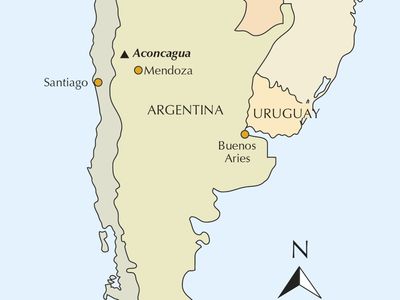
yl from Romania – YO6EVA Éva Gajdo and Csaba YO6PIB with colleagues from SOTA Mendoza, Argentina, activated SOTA (LUM/PC-004) Jan. 2020.
Éva Gajdó YO6EVA and Csaba-Zoltán Kertész YO6PIB came to climb and activate Aconcagua during the first two weeks of January 2020. Aconcagua (LUM/PH-001) is the highest summit in the SOTA programme, altitude. 6960m.
However they could not reach the summit due to very high winds. They began their descent as per schedule feeling very disappointed, especially regarding the Mendoza radioclub friends who had supported the expedition, prepared to ‘chase’ (on air) and even to make ‘summit-to-summit’ contacts. They made 2 attempts and spent 3 nights at over 6000m.
On their arrival back in Mendoza, Eva and Csabone had one day left before catching their plane home to Romania. Tthe Argentina SOTA group was also disappointed and it was decided to activate another summit where they could communicate in VHF and HF as originally planned.
The route was chosen so that Eva and Csaba could enjoy seeing animals from the local Villavicencio reserve, mostly guanacos. The group was also lucky enough to see several condors flying over the activated peak in the Paramillos area.
The group were surprised by the number of active stations that made contact. Many operators were keen to communicate their enthusiasm at contacting the visitors and to wish them a safe journey back to Romania. Unfortunately propagation conditions for HF were not good, although some contacts were achieved.
The Argentinians were happy that Eva and Csaba had managed to activate an Argentine summit and although it was not Aconcagua, that they had enjoyed the local hospitality of Mendoza.
LUM/PC-004, Paramillos 3356m This peak is not well known and does not have a name, near Termas Villavicencio, Mendoza (Argentina). Value 8 SOTA points,
YouTube by LU1MAW Alejandro Ciro Weber https://youtu.be/mxC0kf5kIGk
See Éva Gajdó Facebook: Album Acongaua 6700 méteren
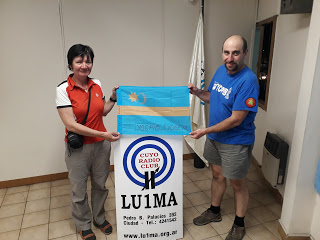
Aconcagua [32°39’12.35″S – 70° 0’40.00″W]
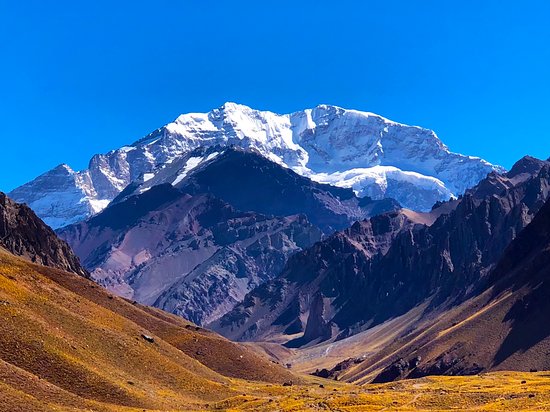
Aconcagua is a mountain in the Principal Cordillera of the Andes mountain range, in Mendoza Province,. east of Argentina’s border with Chile. Aconcagua is the highest mountain outside Asia, at 6,961 meters (22,838 feet)
The mountain and its surroundings are part of the Aconcagua Provincial Park. Aconcagua Provincial Park is 185 km away from the city of Mendoza, near the border with Chile.
The mountain has a number of glaciers. Aconcagua is arguably the highest non-technical mountain in the world, since the northern route does not absolutely require ropes, axes, and pins. around 3,500 climbers tackle Aconcagua each year with a success rate of about 60%. Aconcagua has one of the highest death tolls of the world’s highest peaks.
There are severe winds and low temperatures, but it’s Aconcagua’s altitude that presents the greatest problem. Every year sees several deaths on Aconcagua – mainly people who underestimated the task and help may take several hours to arrive. Climbing the mountain will require on average of around 21 days.
The official visiting season is from November 15 to March 15. During the summer, the temperature at night above 5,000 meters (16,400 feet) is about -20°C (-4°F), and the usual temperature at the summit is -30°C (-22°F). In the rain shadow of the Andean crest, the park is one of the most barren parts of the Andes, with only a discontinuous cover of prostrate shrubs and grasses. At the highest altitudes, it is almost pure scree and snow.
Snips – News For Scotland – 15th March
The news headlines:
- Voting for the RSGB elections is now open
- NASA Mars rover has a name
- Coronavirus affects amateur radio events around the world
GB2RS – News Script – HERE .
CLUBS
The situation with the Covid-19 virus is changing rapidly. You should check before travelling that the activities announced here are taking place. This listing is correct as of 12 noon on Friday the 13th of March.
Unfortunately, due to Covid-19, the CW Boot Camp at GM6NX Stirling due to take place on the 22nd of March and the 23rd annual GMDX Convention due to take place on the 4th of April have been postponed. New dates later in 2020 will be announced as the situation becomes clearer.
Stirling & District Amateur Radio Society club has a meeting from 10am to 2pm today and next Sunday. Thursday sees a club night. For details, email secretary@gm6nx.com
On Monday Edinburgh & District Amateur Radio Club has a net operating evening and Saturday sees a club meeting and social evening. Contact Norman, GM1CNH, on 0774 094 6192.
On Tuesday Kilmarnock & Loudoun Amateur Radio Club has an activity and training night. Contact Len, GM0ONX, via email to klarcinfo@gmail.com
On Tuesday Livingston and District Amateur Radio Society has a training evening. Details from Cathie, 2M0DIB, on 01506 433 846.
On Tuesday Moray Firth Amateur Radio Society has an evening planning the surplus sale. More from Paul, GM8HWZ, on 07967171189.
West of Scotland Amateur Radio Society has its usual Solder Group meeting with a technical evening with licence training. Following on from last Friday’s programme change, this Friday is a Hands-On evening. Details are at wosars.club.
On Thursday Aberdeen Amateur Radio Society is holding the AGM of the Grampian Repeater Group. Contact Fred, GM3ALZ, on 01975 651 365.
On Thursday Lomond Radio Club is having a club night. Detail from Barrie, GM4HEL, by email to gm0kzx@googlemail.com
On Thursday Wigtownshire Amateur Radio Club is having a night on the air. Information from Clive, GM4FZH, by email to info@GM4RIV.org
On Friday Ayr Amateur Radio Group is having a club night. Please check club website for updates or speak to Derek, MM0OVD, on 0744 793 1941.
On Friday Cockenzie & Port Seton Amateur Radio Club is holding a construction night. More information from Bob, GM4UYZ, on 01875 811 723.
On Friday Mid Lanarkshire Amateur Radio Society is having a club night, tuition and radio operations. Detail from https://mlars.co.uk/
How did Neil Armstrong communicate with Earth…………….?

Photo: FADEL SENNA/AFP/Getty Images
How did Neil Armstrong communicate with Earth after stepping on the moon’s surface and say his famous words?
The PLSS life support backpack contained a VHF band radio which transmitted voice and biosensor data from the spacesuit to the LEM communications system, and voice signals from the LEM to the suited astronaut. The LEM communications system, then communicated voice and bio sensor signals with Earth using S-band, a UHF frequency range widely used in space because of its ability to pass through Earth’s ionosphere without distortion or reflection.
All voice communication was amplitude modulated, which is why it carried readily recognizable AM signal distortions and noise. The S-band transmitter that talked to Earth also acted as a transponder, responding to coded ranging signals from Earth which were used to accurately measure the distance from a ground station on Earth to the LEM. Voice and data could also be routed through the CSM in orbit, and there stored on the DSE recorder for later spooled delivery to Earth, though I don’t know that this was actually done with lunar EVA data.
The VHF transceivers had two channels, and communications between the LEM and suited crewmen were “duplex,” meaning each could transmit simultaneously to the other. Ground transmissions, on the other hand, were “simplex,” and the characteristic Quindar tones were used to simplify single-channel (you talk, then I talk) communication.
Communication between the LEM and astronauts performing EVA was facilitated by a small VHF antenna deployed by the first crewman down the ladder. On the surface, the crew deployed a large, umbrella like S-band antenna for beaming voice and data directly back to Earth without having to relay through the CSM and its high-gain antenna array.
On later missions, of course, a somewhat smaller deployable S-band antenna was carried by the Lunar Roving Vehicle.
Original Article Courtesy of FORBES.COM – HERE and QORA.COM .
Snips – News For Scotland – 8th December 2019
The news headlines:
- GB2RS Christmas schedule
- YOTA month news
- Sweden discontinuing 2.3 & 3.4GHz permits
GB2RS – Script – HERE .
CLUB NEWS:
On Monday Edinburgh and District ARC has its net. Contact Norman, GM1CNH, on 0774 094 6192.
On Tuesday Dundee Amateur Radio Club has its Christmas meal. Contact Martin, 2M0KAU, on 0776 370 8933.
On Tuesday Kilmarnock and Loudoun Amateur Radio Club has its Christmas social evening. Note that this is a change from the 17th as previously advertised. Contact Len Paget, GM0ONX, via email to klarcinfo@gmail.com.
On Wednesday Glenrothes and District Radio Club is holding its Christmas bash in Thornton. Details from Tam, on 0775 352 6498.
On Wednesday Inverness and District Amateur Radio Society is having a club night. For details, email InvernessRadioSociety@gmail.com.
On Wednesday West of Scotland Amateur Radio Society’s Solder Group has a meeting covering Licencing & Technical issues, and on Friday the Club has a Christmas video show. Details are at wosars.club.
On Thursday Wigtownshire Amateur Radio Club is having a Christmas quiz. For details, email info@GM4RIV.org.
On Friday Mid-Lanarkshire Amateur Radio Society is having a club night, tuition and radio operations. Details at mlars.co.uk.
